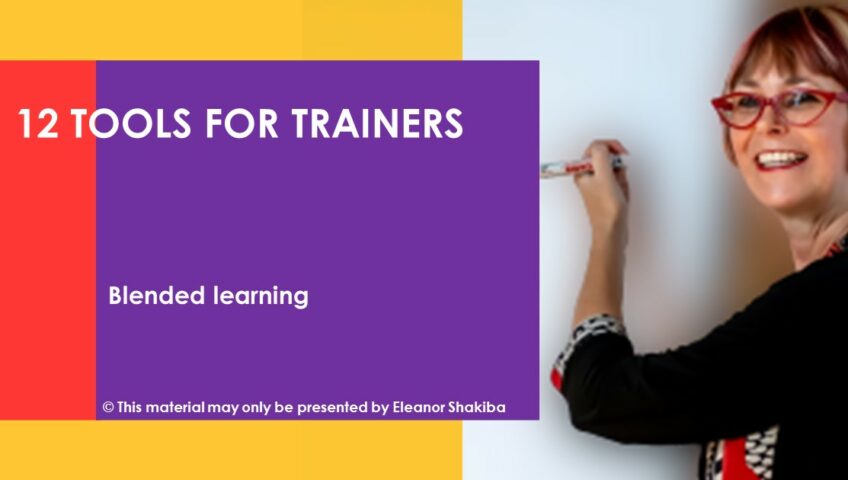Everyone learns at their own pace. And savvy facilitators factor this principle into every session they present. Blended learning techniques are your best friend here. As you know, they use a combination of face-to-face instruction and online or digital learning tools. However, you need to design your blended learning programs exceptionally well. Taking shortcuts and simply ‘mashing’ content together will confuse learners rather than fostering skill development.
In the best blended learning programs, trainers consider the best method for delivering each component. At a minimum, learners receive both in-person instruction and digital content. More advanced programs include coaching (online or face-to-face as required), peer support groups and action learning projects. Coherence is created through careful program design and briefing. This is why blended learning is not a ‘cheap option’ and trainers should stress this to senior managers when they are asked to ‘just put something online’.
Blended learning started as an educational model for adolescents, but it quickly gained popularity in the corporate world. Research has found several indicators of positive learning outcomes in blended learning. With the right techniques, anyone can benefit from a combination of digital and face-to-face training. However, trainers and facilitators need to ensure their blended programs cater to a wide range of learning styles and technical abilities.
You also need to choose the right format for blending face-to-face training and digital material. A common blended strategy involves distributing digital training material before a face-to-face training session. This means people can familiarise themselves with key concepts in advance. The in-person training can then focus on a discussion of the content and practical exercise. When done well, this reduces the time spent explaining concepts and increases the time available for experiential activities and groupwork.
Another strategy involves virtual training as an extension of the workforce’s regular duties. For example, employees may complete digital courses to learn new skills that aid their current job responsibilities. The digital material provides additional knowledge while they gain practical experience at work. Organisations may also use digital material as supplemental content for an in-person training program. Most of the training is completed face-to-face, but employees need to complete additional assignments through a digital platform. This strategy blends both methods to accommodate a wider range of preferred learning styles.
It’s obvious that blended learning is here to stay. As we learn more about human interaction with technology, trainers will develop better ways to enhance engagement and retention in blended programs. My hunch is, these will be underpinned by firm knowledge of education psychology, positive psychology training and experiential learning methods. So don’t let your facilitation and design skills get rusty!
Want to boost your training and facilitation skills? Enrol in a trainers’ master class with Eleanor Shakiba today.
About the author: Eleanor Shakiba
Eleanor is a positive psychology trainer. She designs bespoke programs for organisations and individuals who want to promote ‘positive deviance’ in business. Her expertise in teaching social and emotional intelligence skills makes Eleanor a highly sought-after facilitator. Eleanor’s qualifications are in Positive Psychology, Social Anthropology, Counselling, Coaching, Adult Education and Neuro Linguistic Programming. Eleanor is the author of the Positive Psychology Toolkit for HR and L&D Practitioners.
